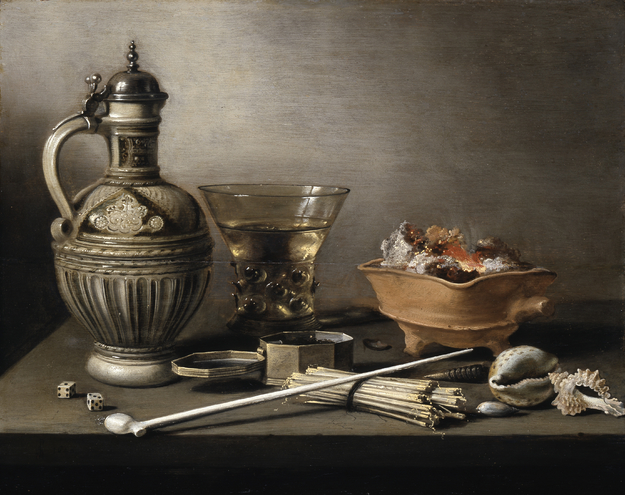The Europeans became familiar with tobacco and came to acknowledge its benefits firstly in the context of scientific or medicinal applications. For instance, the Sevillian physician Nicolas Monardes dedicated his entire research to studying and sharing the scientific benefits of the plant’s different forms as common among the Amerindians. He outlined at least twenty curative uses based on their knowledge. For example, in case of headaches tobacco leaves would be used at the site of the pain, and Picietl (pulverized tobacco) could be used as an anesthetic. He also remarked that smoking was beneficial for asthmatics and people with chest coughs. Other contributions about tobacco were made by the French agronomist Jean Liébault, who wrote about the methods of cultivating tobacco and its agricultural environment, and the Flemish physician and botanist Matthias de l’Obel, who depicted tobacco as a “botanical specimen” with medicinal properties during the earlier 17th century (Norton, 2008).
It was the mariners and traders who established the first ‘European’ social environment in which smoking and chewing tobacco was common. They learned from the Amerindians how to enhance the stimulating properties of tobacco, but also to appreciate the human bond that was created by simply sharing a pipe, in their case during their long journeys at sea. The sociability around tobacco, although originally seen as plebeian, contributed to it spreading from the people of “low consideration” to other ranges of society. Thus, during the mid-17th century, the clay pipes and maize-wrapped cigars became popular among the elites, whereas the powdered form was used mainly by the commoners while doing manual labor. Eventually, traders also brought the crushed tobacco meant for snuffing, which came to be called Rapé by the French, from the Andean communities of South America. This created a new market interested in more refined and exotic combinations of tobacco with herbaceous fragrances such as jasmine, orange blossoms, clover, liquidambar, rose, and other delightful scents. Consequently, snuffing became part of receptions and gatherings of the aristocracy during the 18th century, but also gained in popularity among clerics, scholars and artists (Norton, 2008).
Thus, the habits and experiences of English and Dutch mariners in the Spanish Caribbean created a demand for tobacco in Northwestern Europe. Despite the Spanish monopoly on the tobacco trade, the Dutch managed to be provided by Eastern Caribbean settlers, often through smuggling, but later also through cooperation with the Portuguese traders making shipments to Lisbon and London. Around the mid-17th century the market established in the Netherlands was mainly provided by the Virginia settlers, the colonial network of the VOC, as well as domestic cultivation in the provinces of Utrecht and Gelderland (Roessingh, 1979). Thereafter, snuffing, chewing and especially pipe smoking slowly became the dominant ways to use tobacco in the Netherlands. Filled pipes came to be sold in pubs, and in general the smoking of tobacco became a sign of status and wealth. Members of the elite would own a silver tobacco box, whereas the lower classes would fill a pipe and share it as a habit commonly seen in the ports. Amsterdam became a central hub in the tobacco trade and some of the original warehouse buildings still exist, such as the Ship Chandlers Warehouse, built in 1624.
Cultural and social practices on both sides of the Atlantic ultimately determined how the uses of tobacco changed. Despite it being strongly condemned and opposed by ecclesiastical authorities, who feared a decline in moral standard, scientifically minded friars emphasized its medicinal properties as discovered by the Amerindians. Most important, perhaps, was its social influence. In Western colonies tobacco was exchanged between Africans, Indians, settlers and mariners. The mariners and merchants used it during their long journeys, against hunger and to treat diseases. Once in Europe, it became part of the feasts and gatherings of the elites, who snuffed “polvos de ambar” in Mesoamerican style. Finally, it was embraced as a source of inspiration among artists and scholars and spread all throughout the world. As Fernando Ortiz said it: tobacco represents the transformation of two cultures that changed after their encounter, marking a transculturation of goods and the rituals around them (Ortiz, 1960).


